The Western Gold Fields
One of the most fascinating aspects Gold Rush history, not only the with California Gold Rush, but also of mining camps in the old west in general was the speed at which a new town was “made into a town“. There were many gold rushes in the west and each was quite similar in many respects.
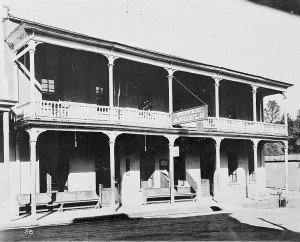
Some of the most notable states where this rapid building occurred were California, Nevada, Arizona and South Dakota. The first settlement that appeared near a new ore strike would be the simple mining camp. This was essentially what the name implies…a camp with tents.
Gold rush history books tell us that this was simply a group of prospectors, many of whom had all their worldly possessions with them, who chose this particular spot as a base to search for high grade ore. Once the ore find proved itself to be more substantial more people would flood in. They would come day and night. The camp would grow and take on a more permanent atmosphere.
From Tents to Towns
The next thing to happen would be the tents exchanged for more sturdy yet still primitive structures. Wood was the product and it was in abundance. With this growth the types of people who drifted in would change as well. During the 1800’s anywhere that money was expected to be, and bustling and growing mining camps were considered to be just such a place, characters of all sorts appeared. Some were honest but often they were not. Gamblers and swindlers would pop up out of the woodwork. Prospectors enjoyed gambling. Their very occupation, that of being a prospector, was essentially a big gamble in itself and gold rush history is filled with gambling.

The point where a mining camp would turn into what one would consider a town usually was when the ore strike proved large enough to last for a considerable time. This is when the big money appeared. Claims would be bought from prospectors by the big money men, often from the east, and would be consolidated with other purchased claims.
Gold rush history books will point out that many, if not most, prospectors would favor selling their claim rather than actually mining it. The reason was simply money. It cost quite a lot of money to work a claim.
If it was hard rock mining where underground tunneling was required, the costs were enormous. Too much for many individual prospectors. Why not cash out on their find and move on to discover another? This describes the rationale of many prospectors.
An interesting side note about mining claims was that when they were recorded, usually at the nearest courthouse many miles away. The documents were entered not only with the date but also the time to the minute. There were so many claims filed that some would be for the same piece of earth thus the exact time of their filing was important.
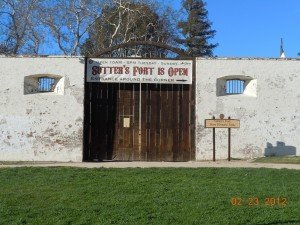
The Next Phase
One of the unique things about these mining towns would be the desolate locations they would be at. Four towns that are excellent examples of this are Deadwood South Dakota, Virginia City Nevada, Rhyolite Nevada and Bisbee Arizona.
None of these were near to any transportation links or supply depots. Deadwood was in the Black Hills, still an Indian worship site. Virginia City Nevada was on the east side of the Sierra Nevada mountains and a far and difficult trek from supplies sitting to the west in California. Bisbee Arizona is about 8 miles north of the Mexican border. Rhyolite Nevada could have been the most remote being on the eastern edge of Death Valley. In spite of this remoteness, Rhyolite had the distinction of being the only one of these four where the automobile was seen among the mules and horses.

The Boom Years
Regardless of the remoteness, people and big money found their way there.
Railroads built lines there to compensate for the lack of transportation. Once the transportation problem was remedied the supplies and people flowed in like never before.
The California Gold Rush and the Virginia City silver strike happened before the Pony Express and the telegraph. Still news of it spread like wildfire. Deadwood’s boom was in the late 1870’s, Bisbee’s at the turn of the 20th century and Rhyolite Nevada was during the first decade of the 20th century. In their cases word spread even more rapidly.
Soon permanent buildings were erected. Saloons and gambling parlors by the dozen sprang up. Hotels, banks general merchandise stores and newspapers were begun and something always a part of old mining towns, the red light district, did a booming business. In the case of newspapers, much of the earlier publications printed as much town gossip as they did real news.
As you can imagine, the larger the town grew the more varied were it’s citizenry. In addition to the ample supply of gamblers and swindlers there would appear the common outlaw. The outlaw favored the mining towns, especially during their earlier years, because of their minimal to non-existent law enforcement and the abundant presence of money.
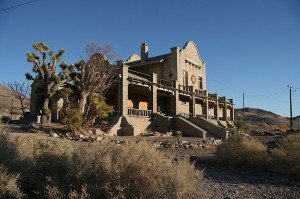
American Culture and the Old Mining Town
When you have thousands of people and lots of money in one place it doesn’t take long for legitimate entertainers, land speculators, hucksters of all sorts to emerge. Towns like Bisbee, Rhyolite and Virginia City had opera houses.
Miners and prospectors enjoyed entertainment after a long day of work and they usually had the money to pay for it. Musicians, dancing troupes, circuses and actors could be found. Even though the towns were remote there was a desire to have the entertainment venues one might find in San Francisco or St. Louis. The newly laid rail tracks made much of this a reality. The day of the lonely miner had passed.
Companies of first rate actors were taking the opportunity to go on tour to these remote camps and towns. Due mostly to the nature and temperament of miners, an angry crowd of men expecting a bit more for their money were known to storm the box office to get their money back and then run the promoter out of town. The towns in California’s Sierra Nevada foothills had easier access to entertainment even in the early 1850’s because of it’s relative closeness to San Francisco.
Links to three photo articles you’ll enjoy on our Western Trips site and one on our Trips Into History site include;
The Amazing Story of the Gold Rush Forty-Eighters
Sutters Fort and Sacramento California
Historic Gold Mining Town of Grass Valley California
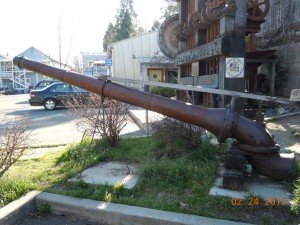
The Decline of the Mining Town
Many old mining towns simply declined when the gold started to pan out. Miners and prospectors had a habit of moving out quickly when rumor spread of another rich mineral find.
Some towns declined but stayed popular modern day tourist attractions. Three good examples, and there are more, were Deadwood, Virginia City Nevada and Angels Camp California. All of these today bring thousands of tourists each year exploring it’s old mines, hotels, saloons and other landmarks that have been preserved and restored.
Some others disappeared about as fast as they appeared. Rhyolite Nevada near Death Valley is today but a ghost town. Rhyolite was abandoned about as fast as it sprang up. All happened within just a few years. Goldfield Nevada to it’s north is essentially a very small art community but has several interesting landmarks for the Nevada tourist. The old high school and Goldfield Hotel are two examples. Bisbee Arizona and the surrounding area is still worked for it’s copper deposits. Bisbee is also a popular Arizona tourist destination with lots to see. Hotels and restaurants there are excellent. The Bisbee Museum offers a good glimpse regarding the many immigrant groups who traveled there from Europe in search of jobs. Lot’s of displays and artifacts from the period.
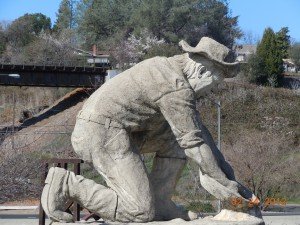
Angels Camp California in the Sierra Nevada foothills east of San Francisco as well as surrounding old mining towns like Sonora and Murphys are popular weekend road trip destinations for northern Californians. Sutters Fort where the California Gold Rush began is now a popular California State Historic Park.
The old mining towns today still offer the western U.S. tourist a great place to learn about our past as well as offering some very unique photo opportunities.
(Photos of National Hotel, water cannon and statue of gold miner from author’s collection. Remaining photos and images from the public domain)
